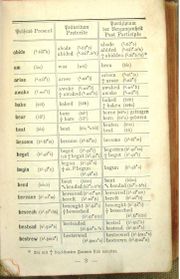Diferencia entre revisiones de «Uso de las dimensiones en inglés»
De WikiEducator
m (c imagen de un gato) |
(/* dimensions *50 opposite/) |
||
| Línea 9: | Línea 9: | ||
== dimensions== | == dimensions== | ||
*big <ref>http://en.wiktionary.org/wiki/big</ref> ↔ small | *big <ref>http://en.wiktionary.org/wiki/big</ref> ↔ small | ||
| − | *high ↔low | + | *high ↔low [http://simple.wikipedia.org/wiki/Wikipedia:Basic_English_ordered_wordlist#50_Opposites] |
*wide ↔narrow | *wide ↔narrow | ||
*fat↔light<ref>http://simple.wiktionary.org/wiki/light </ref> | *fat↔light<ref>http://simple.wiktionary.org/wiki/light </ref> | ||
| Línea 15: | Línea 15: | ||
*triangled | *triangled | ||
*oval | *oval | ||
| − | *right-angled or rectangular | + | *right-angled or rectangular |
*plain | *plain | ||
*even<ref>http://en.wiktionary.org/wiki/even</ref>↔ rough (irregular surface) | *even<ref>http://en.wiktionary.org/wiki/even</ref>↔ rough (irregular surface) | ||
Revisión de 13:18 18 jul 2011
| Usar los adjetivos calificativos -dimesiones, formas- en las oraciones en idioma no materno |
Para reconocer las formas y dimesiones en inglés.
Materiales
Diccionarios no bilingües, por ej. the Merriam-Webster Dictionary
dimensions
- big [1] ↔ small
- high ↔low [1]
- wide ↔narrow
- fat↔light[2]
- rounded↔angled
- triangled
- oval
- right-angled or rectangular
- plain
- even[3]↔ rough (irregular surface)
- ejemplo: el joven pesa 120 kilogramos está gordo (this young man weight 260 pounds and is fat)

